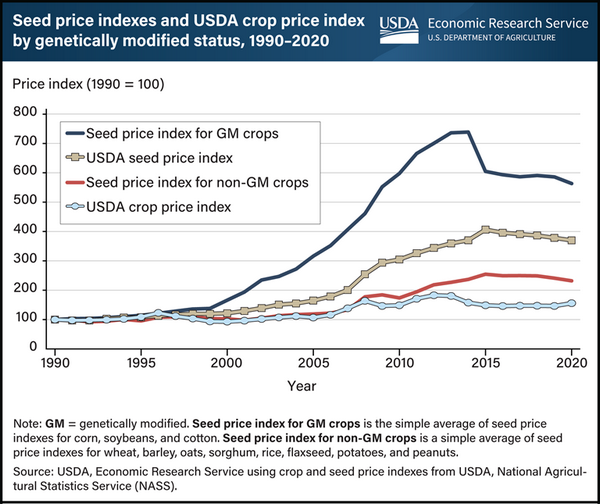Prices farmers paid for crop seed increased significantly faster than the prices farmers received for crop commodities between 1990 and 2020. During that period, the average price farmers paid for all seed rose by 270 percent, while the crop commodity price index rose by 56 percent. For crops planted predominantly with genetically modified (GM) seed (corn, soybeans, and cotton), seed prices rose by an average of 463 percent between 1990 and 2020.

During this period, GM seed prices peaked in 2014 at 639 percent above 1990 price levels. Despite their higher cost, GM crop varieties have provided significant productivity gains for farmers, partly through higher yield but also by lowering farm production costs. For example, GM traits for insect resistance reduce the need for insecticide applications. Similarly, GM traits for herbicide tolerance provide a substitute for mechanical tillage, thus reducing labor, machinery, and fuel previously used for controlling weeds. This chart appears in the USDA, ERS publication Concentration and Competition in U.S. Agribusiness, published in June 2023.
Source: ers.usda.gov
